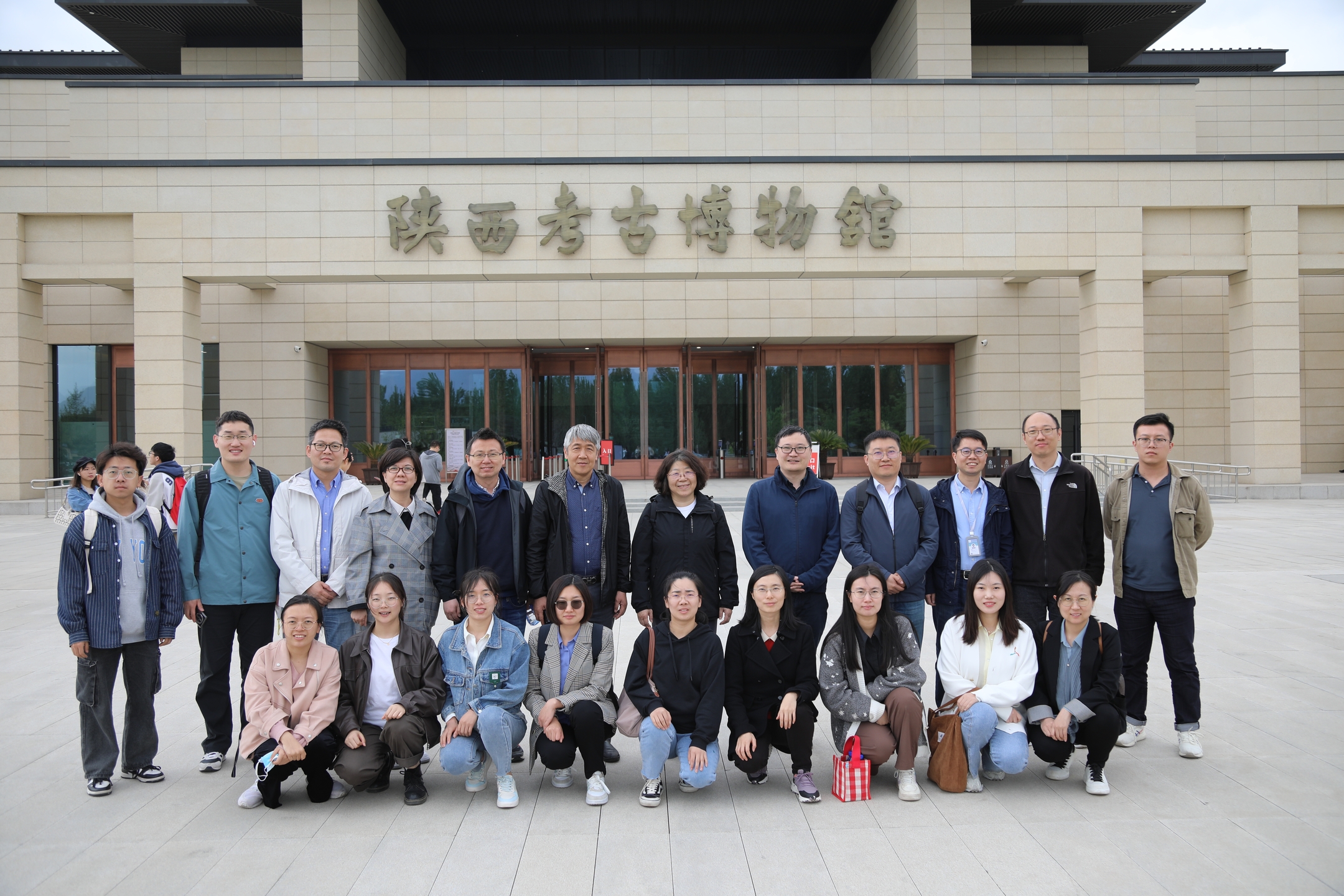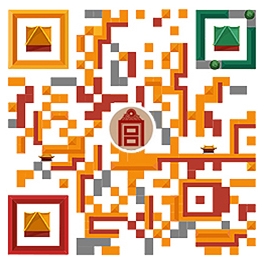On 14 April 2023, the meeting for the conclusion and promotion of the China-Greece Belt-and-Road Joint Laboratory on Cultural Heritage Conservation Technology’s (Joint Laboratory) “development and collaborative research” project, a key project of strategic scientific and technological innovation and collaboration of the national key research and development programmes, successfully took place online and offline at Shaanxi Academy of Archaeology.
The meeting was chaired by Qu Liang, executive deputy director of the Joint Laboratory and director of the Conservation Standards Research Institute at the Palace Museum, and attended by Zhao Guoying, director of the Joint Laboratory and deputy curator of the Palace Museum; Zhao Xichen, deputy director of Shaanxi Academy of Archaeology, a unit co-established by the Joint Laboratory; heads of task teams from units involved in the project; and personnel from the project team.
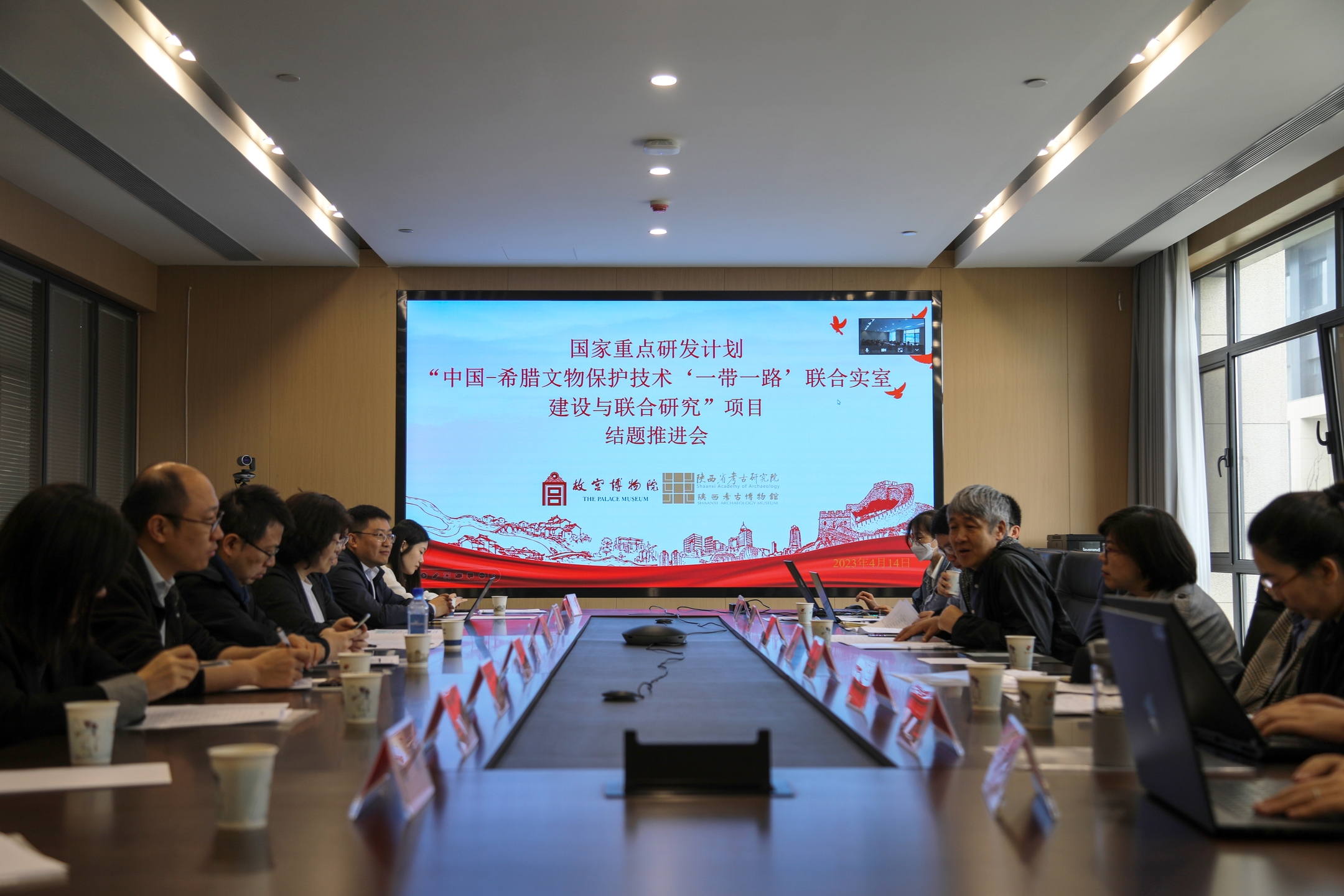
Deputy Director Zhao first welcomed the project team before briefly
introducing Shaanxi Academy of Archaeology and its Shaanxi Archaeology Museum.
The academy is China’s oldest and largest archaeological research institute,
while the museum is China’s first such museum, which formally opened on 28
April 2022. Deputy Director Zhao added that he hoped to strengthen
communication and collaboration with different units in artefact preservation
and application demonstration. He also encouraged members from the project team
to engage in in-depth communication and draw on all useful opinions for the
conclusion of the project at the meeting.
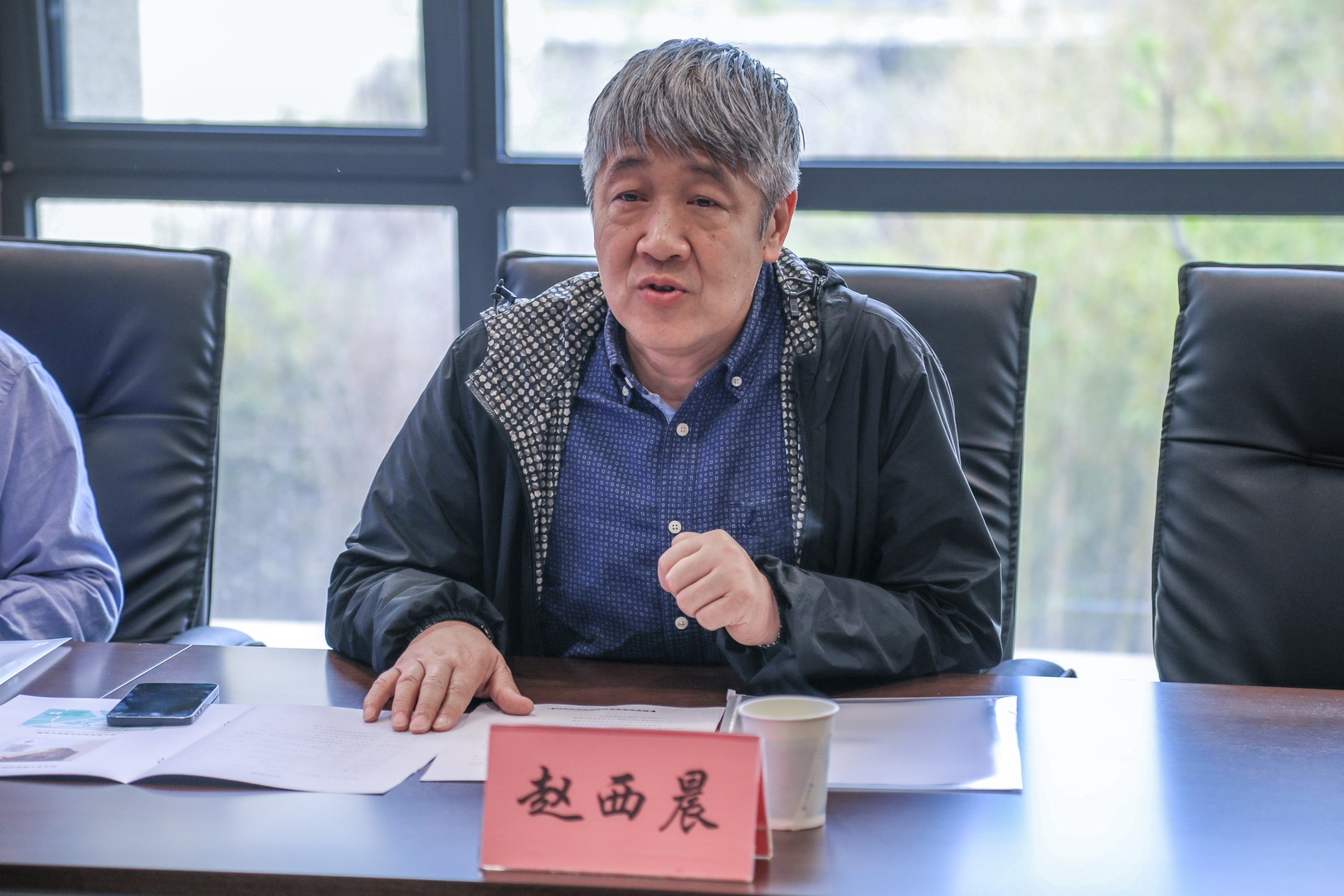
Zhao Guoying, deputy curator of the Palace Museum and the project
manager, reported on the overall progress of the project and the expert
opinions from mid-term project checks and on-site examination. She also pointed
out issues currently facing the project before laying out the key points for
the project’s acceptance appraisal, including the overall requirements,
preparation of materials for the general performance assessment and points for
attention, and added that key tasks had been set before the conclusion of the
project. Zhao remarked that the project would conclude this November, so there
was little time to waste and many tasks must still be completed. She hoped that
individual units would work together, keep to the schedule and complete the
tasks while maintaining both quality and quantity in accordance with the
mission statement and project-result indices.
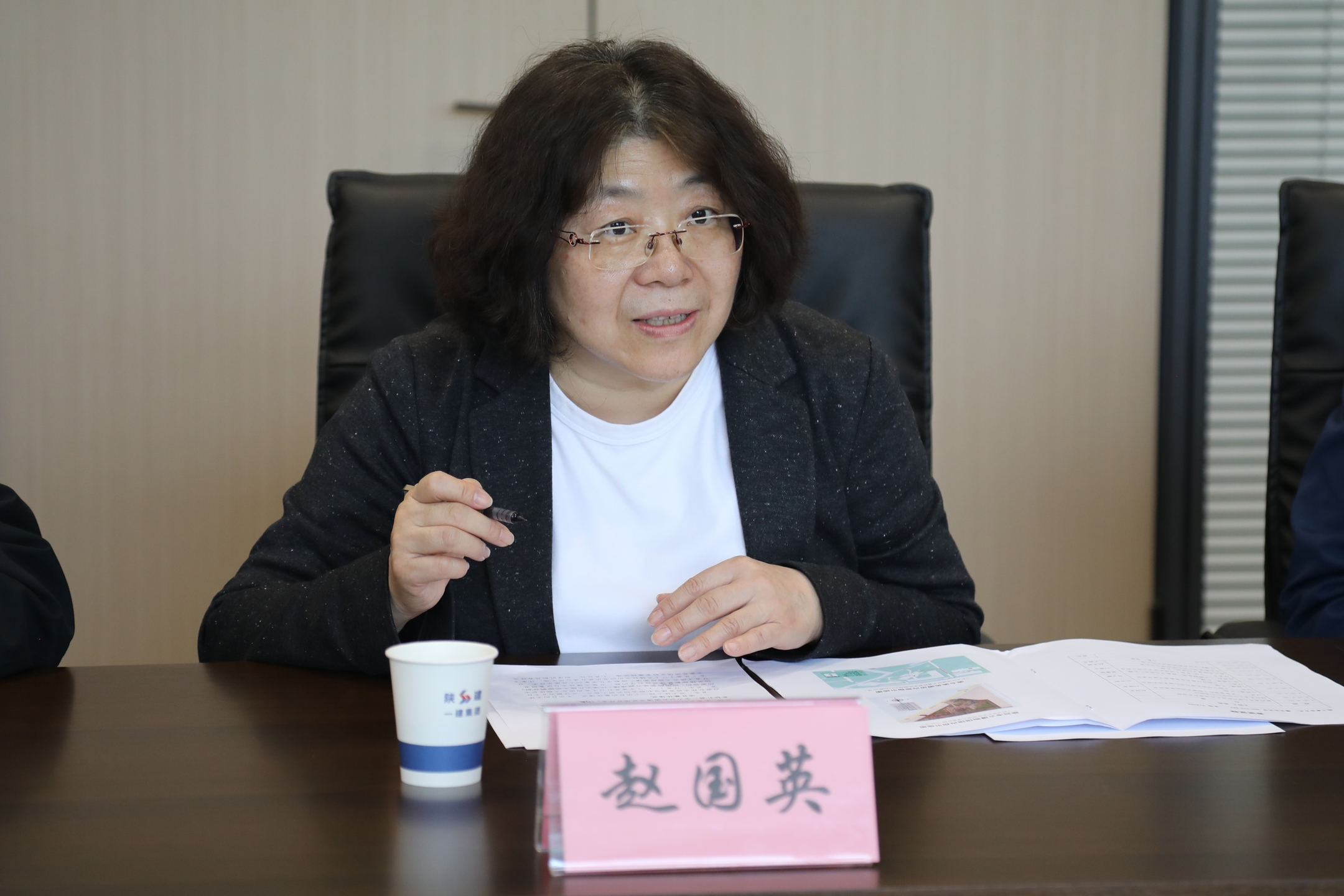
The heads of individual tasks respectively reported on their progress
and challenges, including the assessment indicators, research progress, budget
and key work plans. The project comprises primarily two key parts, namely the
development of the laboratory and joint research, which are divided into six
tasks: Tasks one to three mainly focus on generic science issues that face
China and Greece in artefact preservation, such as the effective controlled
cleaning of contaminants, rapid large-scale non-destructive testing and
analysis and meticulous damage inspection, and the research and development of
key technologies and equipment. Task four involves the research on technologies
for ultra-high-definition three-dimensional digitised collection, procession
and demonstration of artefacts. Task five is to demonstrate the application of
research results of the above key technologies. Task six mainly focuses on
development, including the basic facilities of the laboratory, personnel,
systems and mechanisms, communication and collaboration and talent cultivation.
Units involved in the project include the Palace Museum, IESL, the Aerospace
Information Research Institute under the Chinese Academy of Sciences, Shanghai
University, the Institute of High Energy Physics under the Chinese Academy of
Sciences, Shaanxi Academy of Archaeology and China Ordnance Industry Survey and
Geotechnical Institute Co., Ltd.
The attendees later actively discussed items such as the overall use of
and issues concerning the project budget, recognition of the achievements based
on the task assessment indictors, publication contents and length, project
personnel transfers and recruitment and visits and data exchange with Greece. Suggestions
were made at the meeting, including issues facing the project should be broken
down and itemised, adjustments should be promptly introduced, the personnel
actively motivated and communication stepped up, so that the tasks may be
successfully completed.
After the meeting, Deputy Director Zhao and company toured Shaanxi
Archaeological Museum.
